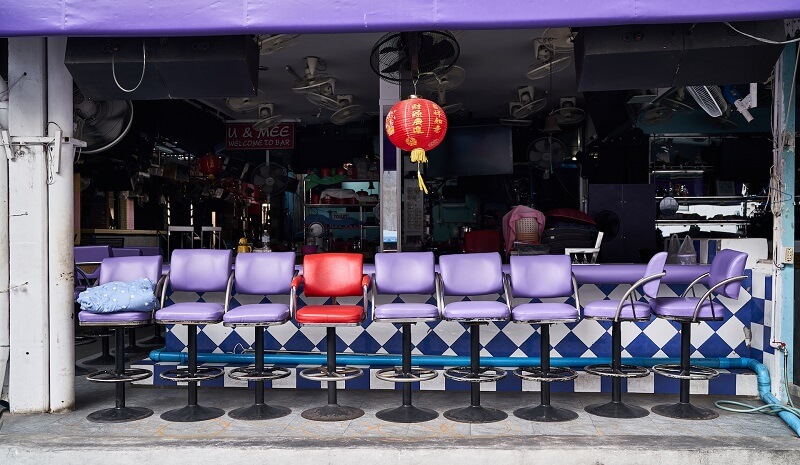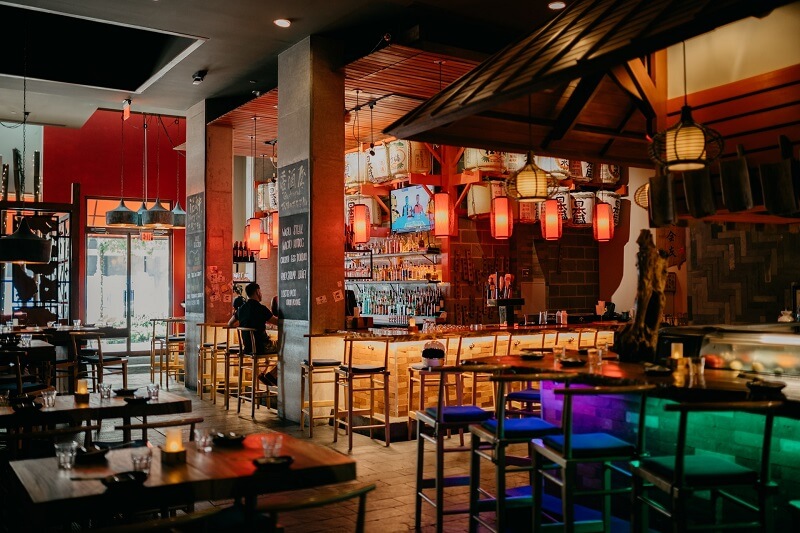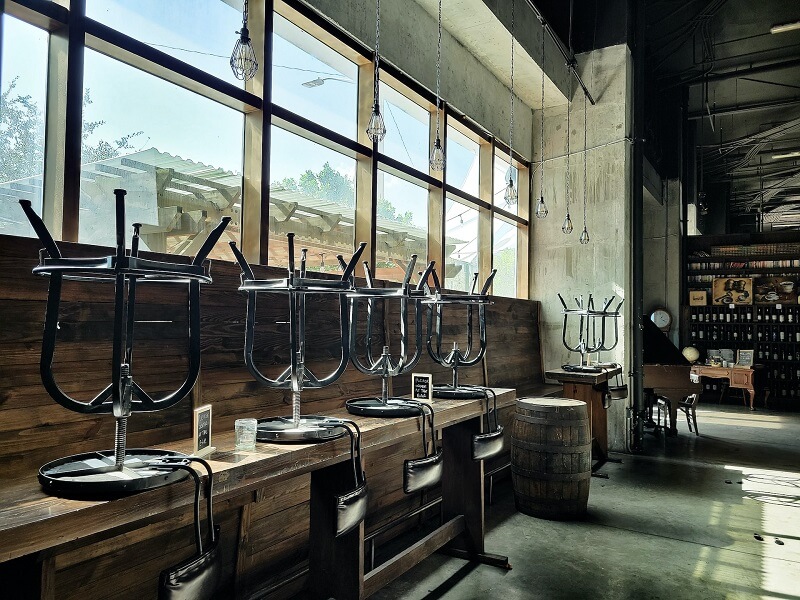Before seeking out a supplier for commercial bar stools, the first place to visit may be your competition to see how their barstools, including ergonomic bar stools, are being used. Just by observation, you will notice some things that are worth copying, while others need to be changed for your unique establishment. Observing your competitors’ bar stools is practically free and will assist you in selecting the right commercial bar stools, including ergonomic options, and prevent you from making a mistake with this major purchase. Below are eight questions to ask yourself while observing your competitors’ commercial bar stools.
Steps to Identify best Commercial & Ergonomic Bar Stools
1. Are the customers comfortable?
Customers should look relaxed and not be straining against poorly designed bar stools, including ergonomic bar stools. If there is an entire area of bar stools not being used, it could be because the bar stools are uncomfortable. People who would normally be sitting may be standing by the barstool instead. Notice if there are adequate footrests, including ergonomic features, because if there is not ample room for feet to rest, undue pressure may be put on the back of the customers’ legs. Feet resting on an ergonomic ring, metal bar, or platform will take away this pressure and allow the customer to be more comfortable. Seat size is another consideration, including the ergonomic aspect. If the bar stool seats are too big, the bar stools may cost more. There will also be less seating in the bar area, as fewer barstools with big seats will fit in the same area than with smaller seats. Bar stool seats that are too small, though, can be uncomfortable for some customers. Imagine the extra profit in a busy bar that had two extra barstools because the right seat size, including ergonomic design, was purchased.

2. Do the bar stools wobble?
Observe if a bar stool wobbles significantly, including ergonomic bar stools. Most floors are not constructed perfectly level, nor are bar stool legs perfectly level, so the combination of both the legs and the floor being unlevel will cause some normal bar stool wobbling. Avoid barstools that are excessively wobbly, including those lacking ergonomic stability, as this may come from poor manufacturing or be caused by a bar stool style that requires more maintenance. Another thing to look for, that most people will not see, is the wobbling between the seat and the base where the seat rests. Swivel bar stools, including ergonomic ones, will wobble when the swivel mechanism breaks down, causing the ball bearings to fall out or when the rivet holding the leveler together stretches and needs to be replaced.
3. Are the bar stools easy to move around?
Observe if there are customers trying to move around bar stools, including ergonomic ones, and if they are able to. Customers do want to move around the bar stools, including ergonomic options, and if they are too difficult to move because they are too heavy, that can be a small reason why a customer may not return to the business. It is rather ironic that lighter weight bar stools, including ergonomic ones, are often constructed better than heavy ones. Consider lighter weight bar stools, including those with ergonomic features, after observing the competition’s seating to ensure that customers can move them around easily. The weight of a bar stool is not as important as may be first thought, especially when considering the ergonomic factors.
4. Do the bar stools look worn?
Quality materials used in the manufacturing process, including durable and ergonomic materials, are the key to bar stools not wearing out too soon and looking worn. For example, if a manufacturer uses lacquer to finish the wood on wood restaurant barstools, it will look great right out of the box. However, a secret is to know what type of finish is used on the wood, as lacquer will become gummy after oils from people’s hands break down the lacquer rather quickly. Observe not only the wood finish but also the other materials, including ergonomic components, which can break down easily, indicating whether or not to purchase that particular bar stool.

5. Do the bar stools match the architecture?
When planning a restaurant, including considering ergonomic aspects, it is good to observe the competition to investigate the style most appropriate for you. The secret here is that a picture of a single bar stool in a magazine, catalog, or online looks vastly different when many of the same bar stools are placed in one location. A layout/color/style board can be of great assistance, but observing the actual bar stools, including ergonomic ones, placed in a competitor’s restaurant can certainly help with your furniture selection.
6. Do the bar stools have backs?
A lot of thought needs to go into whether bar stools with or without backs, including ergonomic options, are used. When visiting a bar where both backed and backless bar stools, including ergonomic ones, are used, observe what types are used in the bar area and where. Some restaurants like to give their customers the most comfort and use a back, including ergonomic support, while others see the backed bar stools as clutter and in the way of seeing the bar. Are backs used around any bar tables? Sometimes a mixture of backless and backed bar stools, including ergonomic ones, are used for looks and comfort. If it is determined that backless bar stools, including ergonomic ones, are appropriate, quite a few dollars can be saved.
7. Do the bar stools have swivels?
Observe whether the competition is using bar stools that swivel, including ergonomic ones, in their restaurant. Swivel bar stools, including ergonomic ones, need more maintenance than fixed seats that do not swivel. With the additional maintenance cost in mind, determine if the extra cost is worth the additional customer comfort, including ergonomic benefits, that the restaurant bar stools with swivels provide.

8. Are there an appropriate number of bar stools?
How does the competition use their bar stools in a given space? Do they have many bar stools, just the right amount, including ergonomic options, or none? While trying to help customers be comfortable, many restaurant bars purchase too many bar stools, which ends up making it difficult for customers to get in and out of bar stools, especially around the bar. Other restaurants purchase too few bar stools, which means extra drinks or meals may go unsold. Observe if your competition’s customers seem too crowded or if there seems to be wasted space. This will assist you in determining the right amount of bar stools, including ergonomic ones, per square foot.
Summary
In summary, visiting and observing your competitors has virtually no cost and can be very beneficial, especially when considering ergonomic factors. By observing potential errors a particular business has made, you can get some great ideas and avoid making errors of your own. You can maximize your own sales and increase your customers’ comfort by purchasing the right quantity, durability, and style of commercial bar stools, including ergonomic ones.
Bar stool ergonomics prioritize comfort with optimal seat dimensions, footrest and backrest support, stability, and customizable features like swivel and height adjustability for individual needs.
The weight capacity of a bar stool can vary depending on its design, materials, and construction. On average, bar stools can typically hold a weight capacity ranging from 250 to 350 pounds (113 to 159 kilograms).
Upholstered bar stools with cushioned seats and backrests are often considered the most comfortable due to their softness, support, and added ergonomic features.

